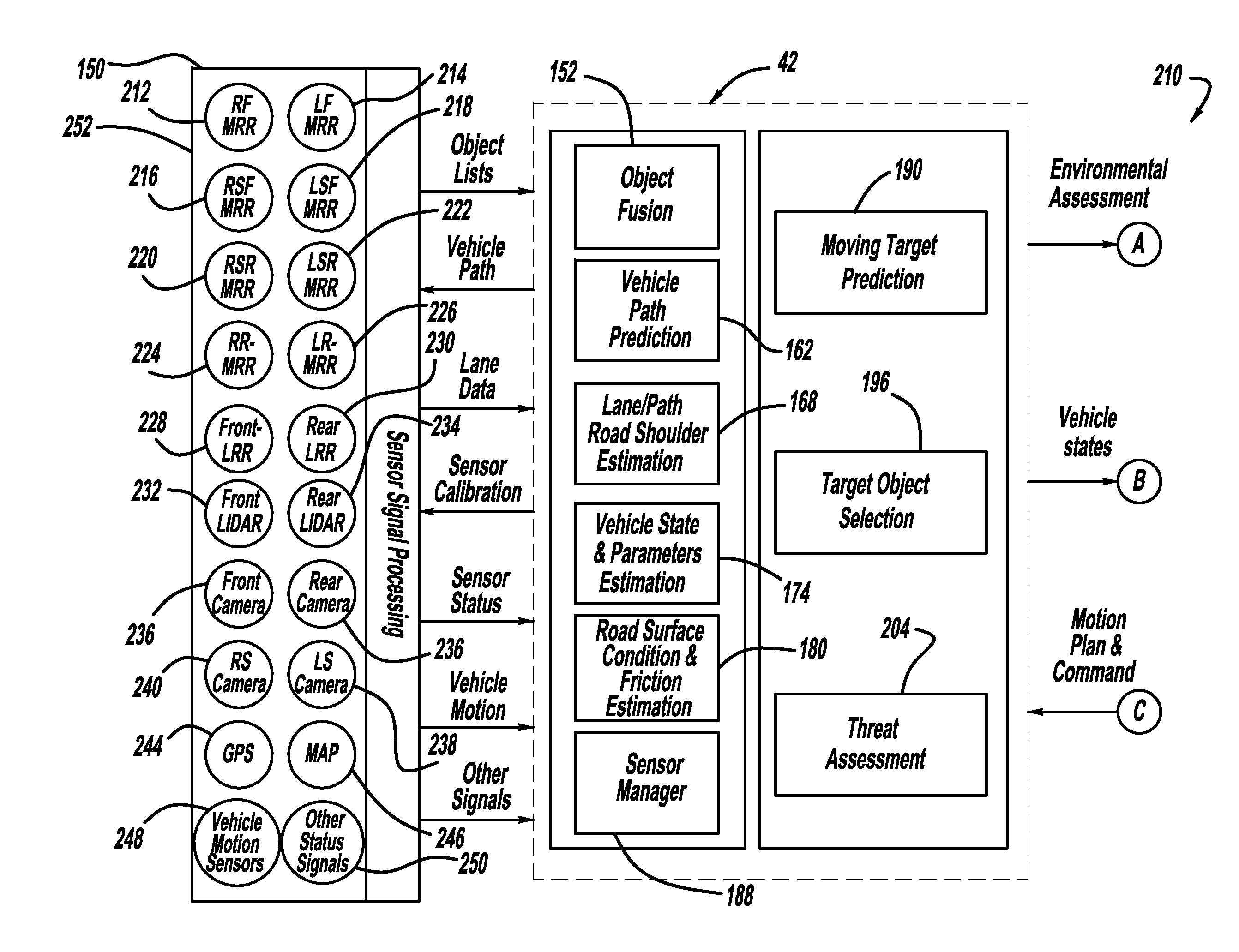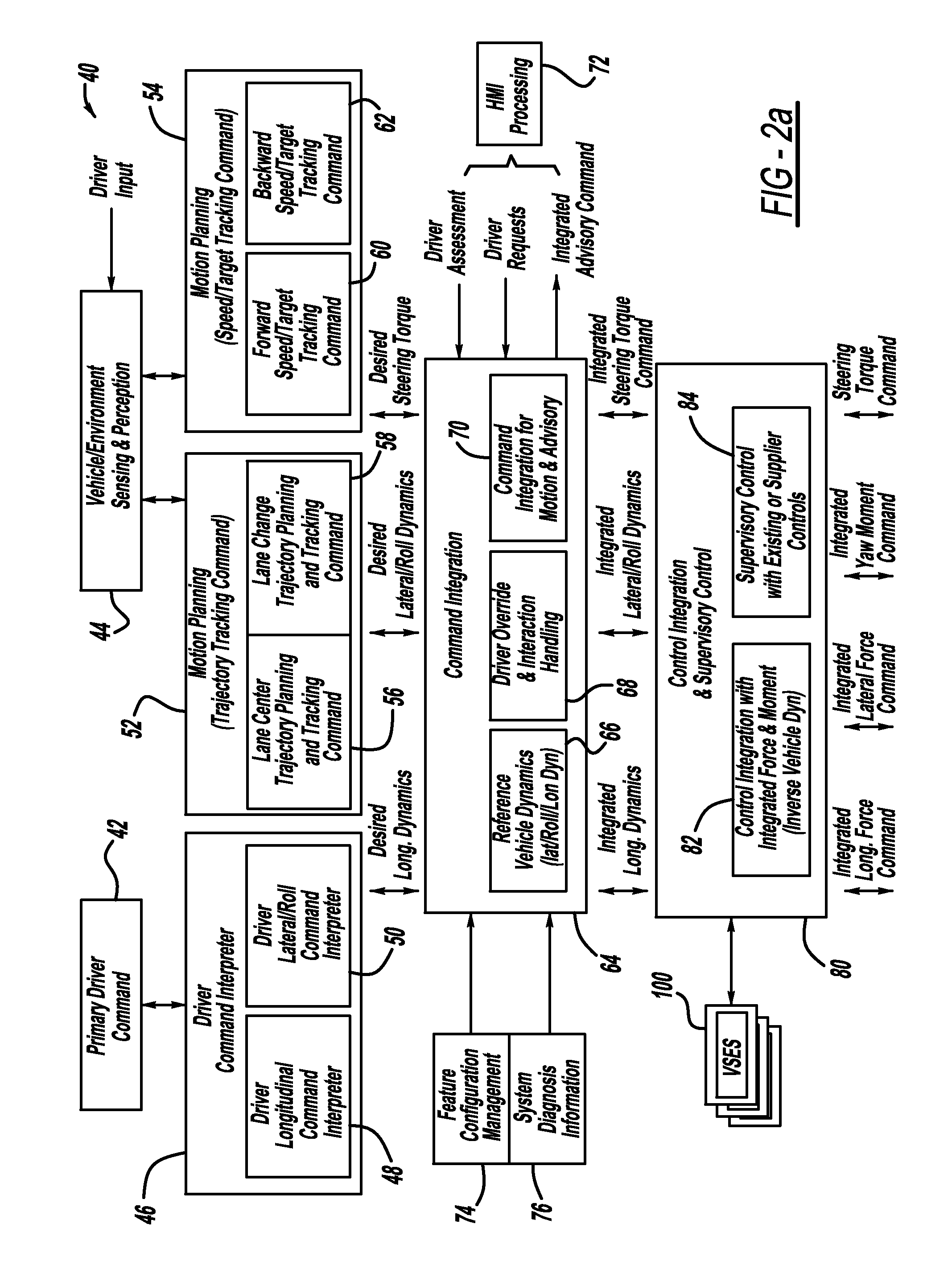Function decomposition and control architecture for complex vehicle control system
a control system and complex technology, applied in anti-collision systems, non-deflectable wheel steering, underwater vessels, etc., can solve the problems of resource and objective conflict, complex process of design and integration of these various devices and sub-systems, and overlap in functional functions
- Summary
- Abstract
- Description
- Claims
- Application Information
AI Technical Summary
Benefits of technology
Problems solved by technology
Method used
Image
Examples
Embodiment Construction
[0015]The following discussion of the embodiments of the invention directed to a vehicle control architecture that is designed in a top-to bottom manner is merely exemplary in nature, and is in no way intended to limit the invention or its applications or uses.
[0016]As will be discussed in detail below, the present invention proposes a functional decomposition and control architecture for a vehicle that is commanded by integrated driver commands coordinated with sensor-guided assist controls to provide smoother activation and transition with less intrusion to the driver and fully integrated driver-vehicle-environment control. The proposed control architecture provides a top-down and synthesis-based design approach with system integration to provide a feed-forward dominate control that minimizes trial and error with faster control response and full operation regions for stability, comfort and performance. The control architecture reduces or eliminates confusion, uncertainty or indete...
PUM
 Login to View More
Login to View More Abstract
Description
Claims
Application Information
 Login to View More
Login to View More - R&D
- Intellectual Property
- Life Sciences
- Materials
- Tech Scout
- Unparalleled Data Quality
- Higher Quality Content
- 60% Fewer Hallucinations
Browse by: Latest US Patents, China's latest patents, Technical Efficacy Thesaurus, Application Domain, Technology Topic, Popular Technical Reports.
© 2025 PatSnap. All rights reserved.Legal|Privacy policy|Modern Slavery Act Transparency Statement|Sitemap|About US| Contact US: help@patsnap.com



